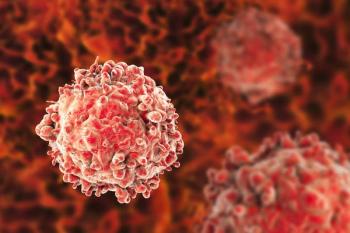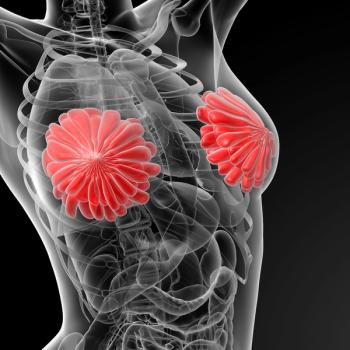
Surgical Overtreatment Has Declined in Grade Group 1 Prostate Cancer
Data show that patients who undergo grade group 1 prostatectomies may experience an increased likelihood of higher risk features.
The use of prostatectomy for patients with grade group 1 prostate cancer has decreased over time, according to findings from a poster presentation at the
Among patients who underwent prostatectomy from 2010 to 2024 and had available data in the Surveillance, Epidemiology, and End Results (SEER) database (n = 162,558), the rate of prostatectomy changed from 32.4% in 2010 to 7.8% in 2020 for patients with grade group 1 disease. From 2010 to 2020, the prostatectomy rates changed from 43.7% to 48.5% for grade group 2 disease, 14.3% to 25.6% for grade group 3 disease, 4.3% to 6.2% for grade group 4 disease, and 5.3% to 11.9% for grade group 5 disease.
Across the Michigan Urological Surgery Improvement Collaborative (MUSIC) cohort (n = 23,370), 20.7% of patients with grade group 1 disease underwent prostatectomy in 2012 vs 2.7% in 2024. In 2012 and 2024, respectively, the prostatectomy rates were 51.6% and 58.2% for grade group 2 tumors, 18.0% and 27.3% for grade group 3 disease, 4.7% and 4.4% for grade group 4 disease, and 5.0% and 7.3% for grade group 5 disease.
The year in which treatment occurred significantly correlated with the likelihood of prostatectomy for grade group 1 disease across the SEER cohort (OR, 0.41; 95% CI, 0.40-0.42; P <.001) and MUSIC cohort (OR, 0.39; 95% CI, 0.36-0.43; P <.001); the same was true for age in the SEER group (OR, 0.81; 95% CI, 0.81-0.82; P <.001) and MUSIC population (OR, 0.77; 95% CI, 0.74-0.80; P <.001). Patients who were Black were less likely to receive prostatectomy for grade group 1 disease than those who were White in the SEER (OR, 0.86; 95% CI, 0.83-0.90; P <.001) and MUSIC cohorts (OR, 0.70; 95% CI, 0.60-0.83; P <.001). Additionally, those of other races were less likely to undergo prostatectomy vs White populations in the SEER (OR, 0.74; 95% CI, 0.70-0.79; P <.001) and MUSIC groups (OR, 0.70; 95% CI, 0.51-0.97; P = .034).
“The proportion of patients receiving prostatectomy for grade group 1 prostate cancer has declined 5-fold since 2010,” lead study author Steven Monda, MD, a Society of Urologic Oncology fellow at the University of Michigan, wrote with coauthors. “Those grade group 1 prostatectomies that are performed are now more likely to have a higher risk feature.”
Investigators aimed to evaluate trends in pathologic grade prostatectomy over the past 2 decades as a surrogate for prostate cancer overtreatment. The study included an analysis of patients undergoing prostatectomy in 2010 to 2024 with available data in the SEER and MUSIC databases.
The study’s primary end point was the proportion of all prostatectomies of grade group 1 on final pathology; the year of prostatectomy was the investigators’ exposure of interest. The secondary end point was the rate of grade group 1 prostatectomies with higher risk features such as biopsy grades of 2 or higher, more than 50% of biopsy cores testing positively for cancer, and a prostate-specific antigen (PSA) level of at least 10.
Investigators determined outcomes via fixed effects models for the SEER population and mixed effects models for the MUSIC population, which controlled for age and race.
The median patient age was 63 years (IQR, 57-67) in the SEER cohort and 64 years (IQR, 59-69) in the MUSIC cohort, with most patients in each population being White (81% vs 83%). Additionally, most patients in each respective cohort had a preoperative PSA level of less than 10 (78% vs 76%), pathological grade group 2 disease (46% vs 53%), pathological stage T2 disease (68% vs 62%), and pathological stage N0 disease (63% vs 76%).
Among patients who received prostatectomy for grade group 1 disease in the SEER cohort, the likelihood of experiencing any higher risk feature increased from 26% in 2010 to 41% in 2020. In 2010 and 2020, respectively, the rates of biopsy grade group 2 or higher were 17% vs 28%, the rates of more than 50% biopsy cores were 10% vs 15%, and the rates of preoperative PSA levels of at least 10 were 9.2% vs 13%.
Across the MUSIC cohort, the rate of any higher risk features changed from 51% in 2012 to 47% in 2024; this rate peaked at 67% in 2021. The rate of biopsy grade group 2 or higher went from 43% in 2012 to 50% in 2023 and then 31% in 2024, while the rates of more than 50% biopsy cores went from 3.8% in 2012 to 19% in 2024. Additionally, 6.0% of patients had preoperative PSA levels of at least 10 in 2012 compared with 13% in 2024.
The year in which treatment was given correlated with the odds of higher risk features across grade group 1 prostatectomies in the SEER group (OR, 1.60; 95% CI, 1.54-1.67; P <.001) and the MUSIC cohort (OR, 1.60; 95% CI, 1.34-1.90; P <.001). A similar association occurred for age in the SEER (OR, 1.14; 95% CI, 1.12-1.16; P <.001) and MUSIC populations (OR, 1.10; 95% CI, 1.03-1.18; P = .004).
Compared with patients who were White, the likelihood of higher risk features for grade group 1 prostatectomies was higher for patients who were Black in the SEER cohort (OR, 1.39; 95% CI, 1.29-1.50; P <.001) and MUSIC cohort (OR, 1.59; 95% CI, 1.15-2.19; P = .005). Patients of other races also experienced increased odds of higher risk features vs White populations in the SEER (OR, 1.19; 95% CI, 1.06-1.35; P = .004) and MUSIC cohorts (OR, 1.21; 95% CI, 0.63-2.33; P = .6).
Reference
Monda S, Demus T, Meah S, et al. Decline in the surgical overtreatment of prostate cancer. Presented at the American Urological Association (AUA) 2025 Annual Meeting; April 26-29, 2025; Las Vegas, NV. Abstract MP22-01.
Newsletter
Stay up to date on recent advances in the multidisciplinary approach to cancer.





















































































